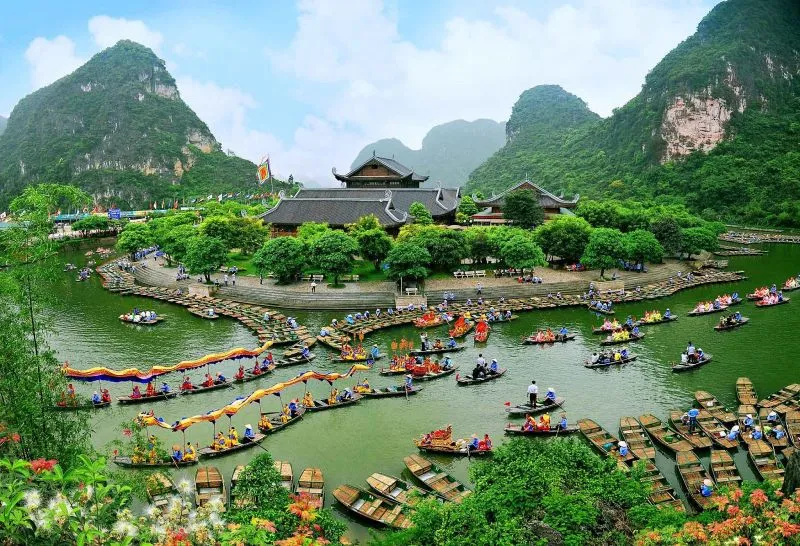If you’re planning a trip to Northern Vietnam, Ninh Binh should definitely be on your itinerary. Known for its dramatic limestone mountains, peaceful rice fields, and scenic boat rides through caves, Ninh Binh offers visitors an unforgettable blend of nature and culture. But before you go, it’s important to know the best time to visit Ninh Binh — because the weather and seasons greatly affect your experience.

🗓 Overview of Ninh Binh’s Climate
Ninh Binh has a humid subtropical climate, with four distinct seasons:
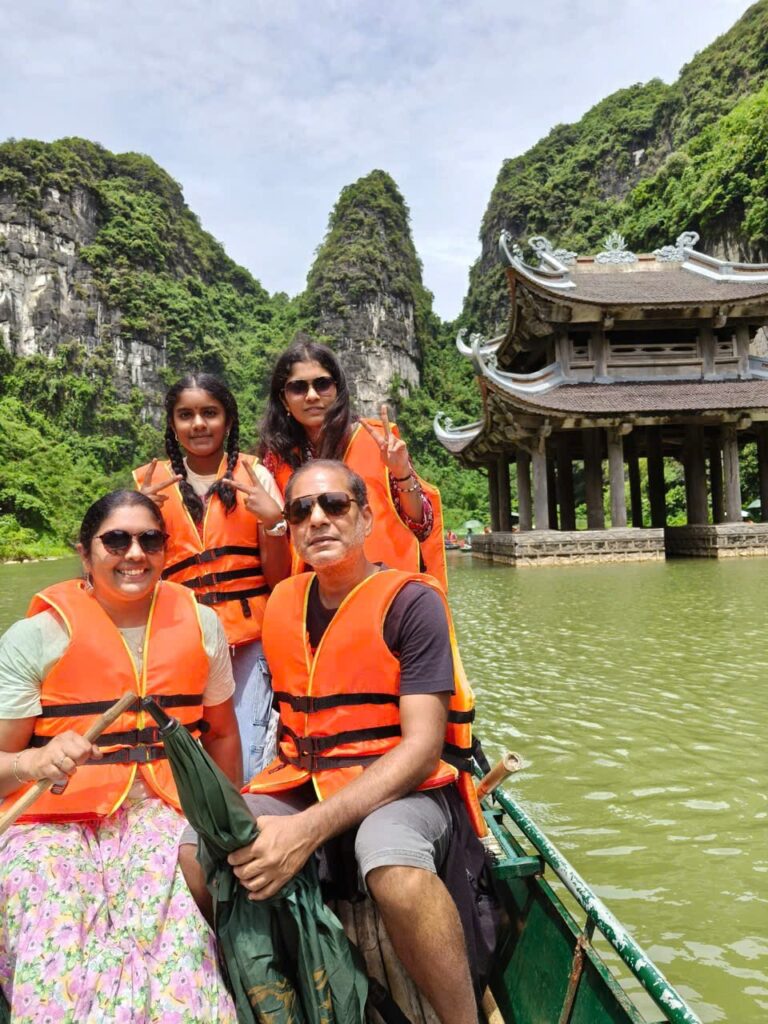
-
Spring (February – April): Mild, fresh, and green
-
Summer (May – August): Hot, humid, and rainy
-
Autumn (September – November): Cool, dry, and golden
-
Winter (December – January): Cold, misty, and quiet
Each season has its own charm, but some are more suitable for sightseeing, outdoor activities, or photography.
🌸 Spring (February – April): Fresh and Peaceful
Why go in Spring?
Spring is one of the best times to visit Ninh Binh. The weather is mild (18–25°C), with fresh air and blooming flowers. It’s also when the rice fields begin to turn green, creating stunning scenery for boat rides in Trang An or Tam Coc.
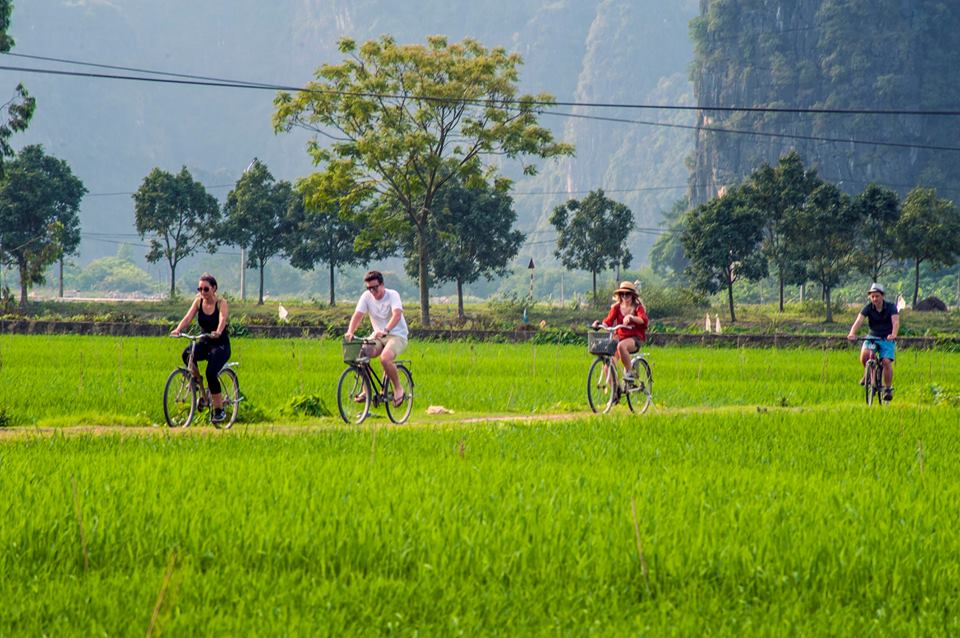
Highlights:
-
Ideal for cycling and walking tours
-
Visit Bich Dong Pagoda and enjoy peaceful temples
-
Fewer crowds compared to summer
Festivals:
The Trang An Festival and Tet (Lunar New Year) bring local color and culture.
☀️ Summer (May – August): Lush but Rainy
Why go in Summer?
Summer is when nature is at its greenest. The landscapes are lush, and boat rides through caves feel like entering a fantasy world. However, it can be hot (up to 35°C) and rainy, especially in July and August.

Good for:
-
Travelers who don’t mind the heat
-
Photographers who love dramatic, misty skies after the rain
-
Budget travelers (fewer foreign tourists)
Tips:
-
Bring a hat, sunscreen, and raincoat
-
Schedule early morning activities to avoid mid-day heat
Read more: Ninh Binh tour from Ha Noi
🍂 Autumn (September – November): The Golden Season
Why go in Autumn?
This is widely considered the best time to visit Ninh Binh, especially in late September and early October, when the rice fields in Tam Coc turn golden. The temperature is comfortable (25–30°C), and there’s little rain.
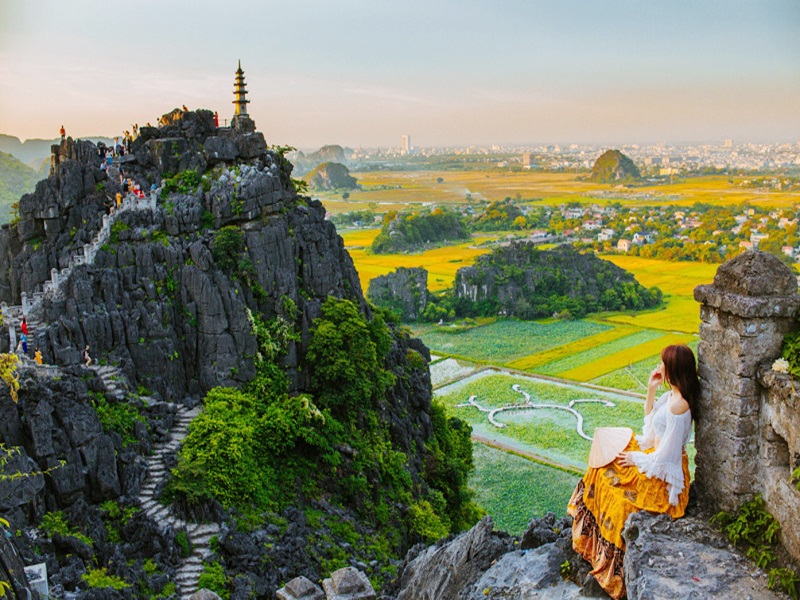
Top experiences:
-
Climb to the top of Mua Cave for panoramic views of golden rice paddies
-
Take a peaceful Trang An boat ride
-
Visit Hoa Lu Ancient Capital without crowds
Perfect for:
-
First-time visitors
-
Couples, families, and travel photographers
❄️ Winter (December – January): Quiet and Misty
Why go in Winter?
Although the weather is cooler (10–20°C), winter offers a mystical and quiet side of Ninh Binh. Mist covers the mountains, and the landscape feels serene. This is a low season, so you’ll enjoy fewer tourists.
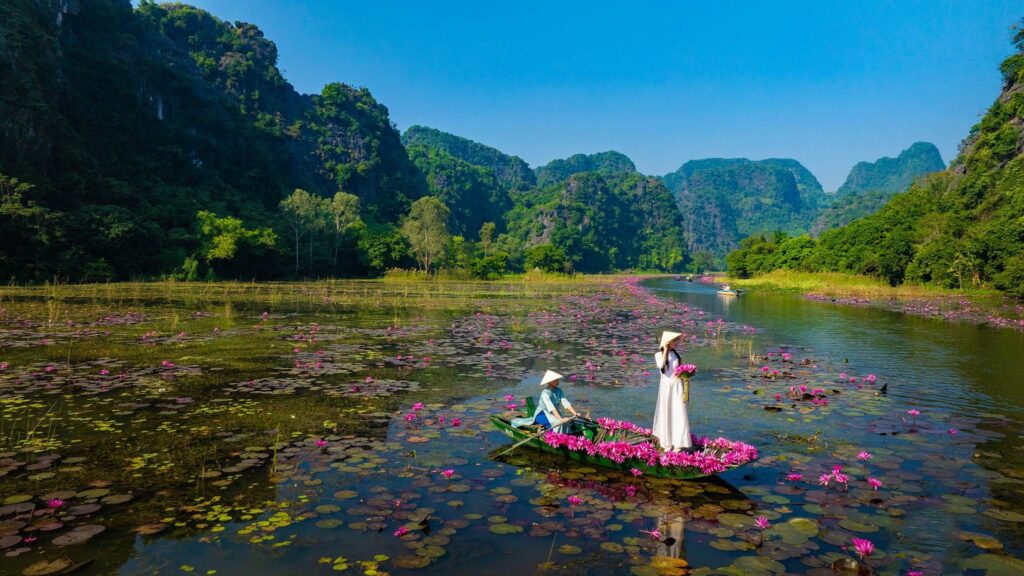
Good for:
-
Travelers seeking a quiet, spiritual experience
-
Temple visits and cultural exploration
-
Budget-friendly travel
Things to pack:
Warm clothes, especially for early mornings and evenings.
📅 So, What’s the Best Time to Visit Ninh Binh?
👉 September to early November is generally the best time:
-
Pleasant weather
-
Golden rice season
-
Perfect for outdoor tours and photos
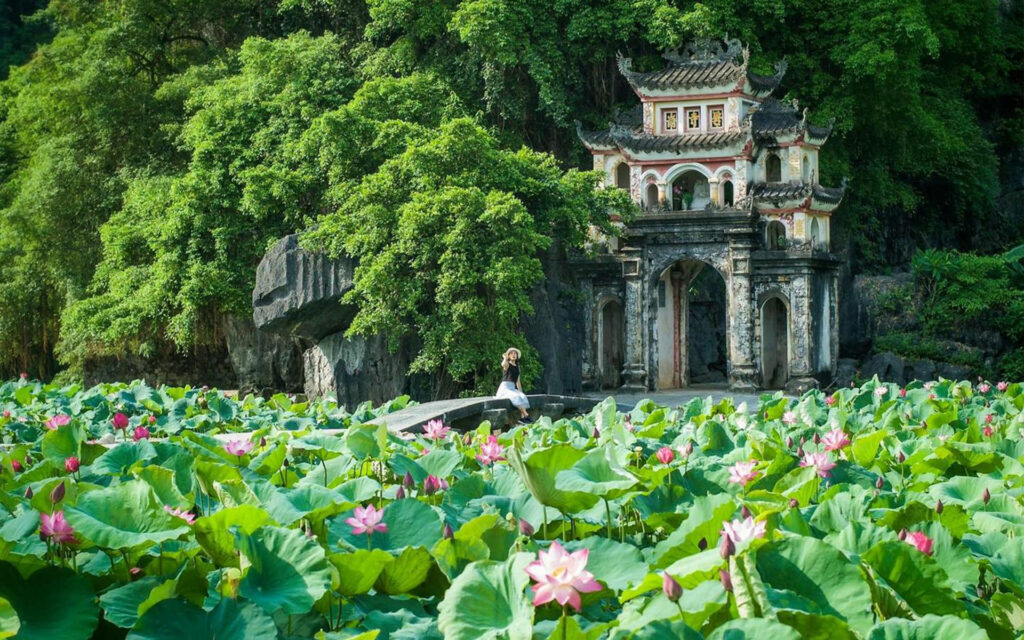
👉 February to April is a close second:
-
Mild temperatures
-
Flowering landscapes
-
Great for boat rides and biking
Avoid July–August if you dislike heat or rain, and prepare for cool weather in December–January.
🧭 Travel Tips for Your Ninh Binh Visit
-
Start early: Sunrise boat rides are magical and less crowded
-
Book ahead: Especially during golden rice season
-
Pack light but smart: Comfortable shoes, hat, sunscreen, rain jacket (if summer)
-
Combine tours: Join full-day trips that include Hoa Lu, Tam Coc/Trang An, and Mua Cave
✅ Final Thoughts
No matter when you go, Ninh Binh offers something unique in every season. Whether you’re paddling through caves, cycling past rice fields, or climbing limestone peaks, the timing of your trip can elevate your experience.
Use this Ninh Binh travel guide to plan your journey at the perfect time — and get ready to be amazed by one of Vietnam’s most beautiful hidden gems.




